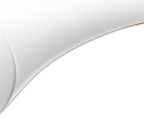QR codes went from zero to hero during the pandemic.
But are people still using QR codes as much now that the pandemic is under control?
Apparently so. During the first half of 2022, Bit.ly saw a 152% increase in QR code creation compared to the same period in 2021, and QR code engagement was up by more than 40%.
“The fact is, people are still scanning QR codes like crazy, and they’re embedded everywhere at this point,” said Toby Gabriner, who joined Bit.ly as CEO in August 2020 – smack dab in the middle of the pandemic – after four years as CEO of NextRoll.
Bit.ly is best known as the web’s URL shortener, but in December 2021 it made its first-ever acquisition of the German QR code generation company Egoditor.
At around the same time, Bit.ly also started testing a link-in-bio tool, similar to LinkTree, for users to route traffic from their social profile to a separate URL without leaving Bit.ly’s platform.
“When I arrived at Bit.ly, it was just around the time when LinkTree was really taking off,” Gabriner said. “And it was, like, how did we ever even let LinkTree exist? This is a product we should have invented, because it’s such a natural extension of our core product.”
Bit.ly is now seeing between 2,000 and 3,000 link in bios created on a daily basis.
Gabriner spoke with AdExchanger.
AdExchanger: Is there still as much demand for link shortening? A lot of platforms offer their own URL services now.
TOBY GABRINER: Yes. On its surface, link shortening may seem like a relatively simple product; and if you’re doing it on a one-off basis, it is. But it’s a lot more complicated and challenging at scale. Some companies that used to offer link shortening went on to deprecate it. Google, for example, shut down its URL shortening service in 2019, and they now push their users to us.
But it’s not just about shortening links. We offer redirects, customization, trust and safety, personalization, tracking – the value proposition is really the totality of those things.
What about analytics?
We do have some small and midsize companies that use our analytics to do link tracking, although larger companies tend to pull data via API into their own larger data warehouse or analytics platform.
But now that we have multiple products on the platform, we see analytics becoming a bigger part of our story.
The analytics get richer now that we’ve added QR codes and link in bio, because we’re able to tell a story about the customer journey across multiple touch points. And we haven’t launched it yet, but we also have an attribution product on our road map.
Did the pandemic motivate the move into QR codes?
We did have a QR code product that we developed in 2017, but it was pretty rudimentary. We didn’t really start to surface it until 2020 – and then the adoption was crazy. We were seeing 1,000% month-over-month growth, which is when we were like, “Okay, this is a pretty big opportunity.”
And that’s when we decided to acquire a QR code generator. Behind every QR code is a link, so it just made sense for us.
My main interaction with QR codes has been scanning for restaurant menus. I don’t think I’ve scanned a QR code otherwise. Am I an outlier?
While it’s true that adoption is higher in some industries than others, it’s a global phenomenon and it’s almost surprising how many use cases there are. I recently traveled to Argentina for 10 days and I couldn’t turn around without seeing a QR code. It was how you would interface with almost every business.
QR codes have become endemic to how businesses connect with their audiences, and we’re seeing them on TV, in direct mail, on billboards, on signs when you walk down the street. I think it’s safe to say the trend is here to stay.
What counts as QR code innovation? By which I mean, what’s something interesting a business can do with a QR code beyond just slapping it on a sign or putting one in the corner of an ad?
One of the reasons there’s been so much adoption is because it’s a very simple technology to use. All you have to do is hold up your Apple or Google phone and point the camera at a QR code to read it.
But there is innovation happening with QR codes beyond what I’d think of as novelty things, like when Coinbase included one in their Super Bowl ad.
One of our clients is Meow Wolf, which is an art production company that creates these cool, interactive experiences, and they’ve started integrating QR codes into the design as a way to extend their activations.
We have another client called City Guide based in Europe whose main business used to be providing printed guides. Now they emphasize digital over print, using QR codes as an onramp to offer people something richer and more engaging.
And it doesn’t have to stop there. When someone scans a QR code, you have the opportunity to form a direct relationship with an end user. Suddenly someone you never would have had the chance to engage with is in your CRM system.
This interview has been edited and condensed.
For more articles featuring Toby Gabriner, click here.



















